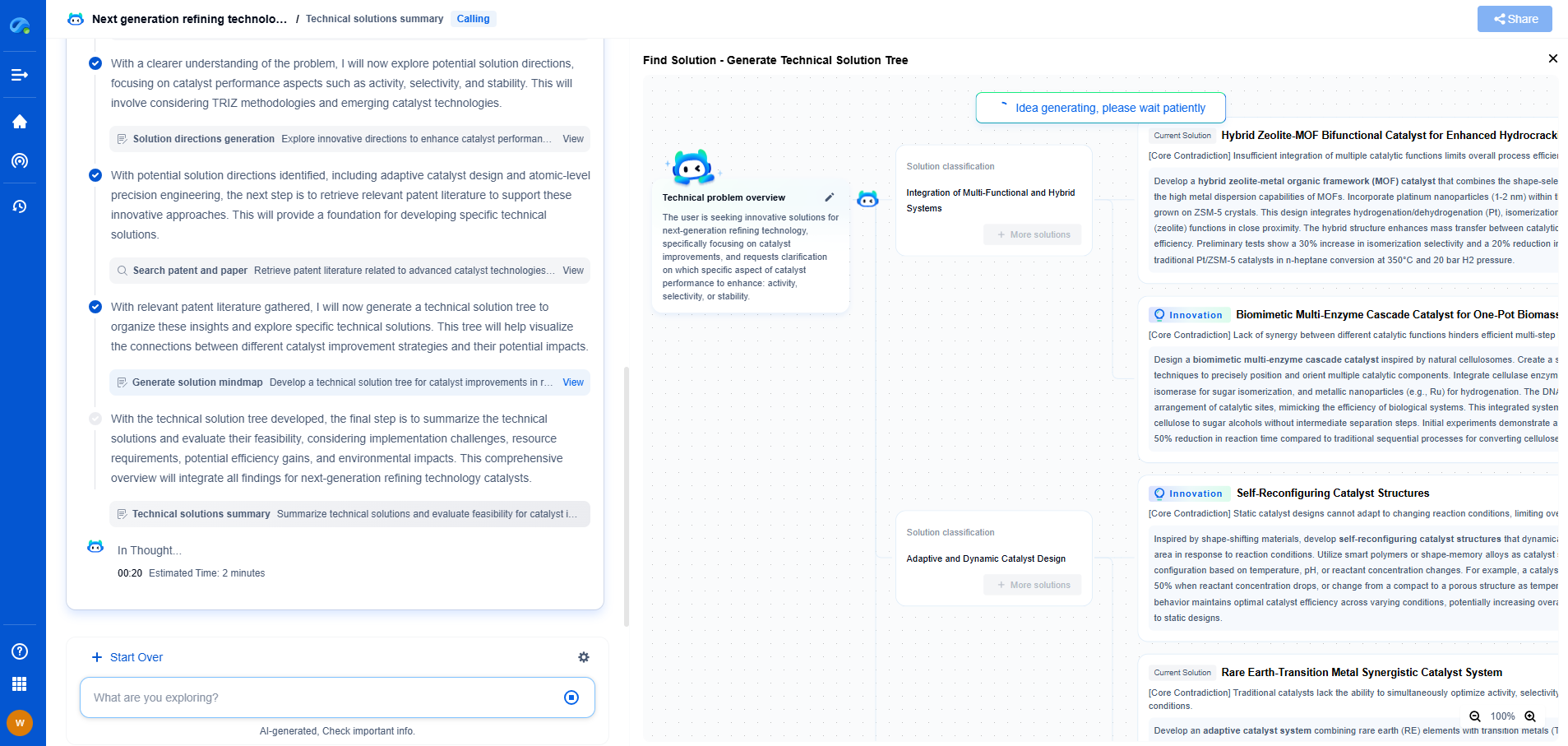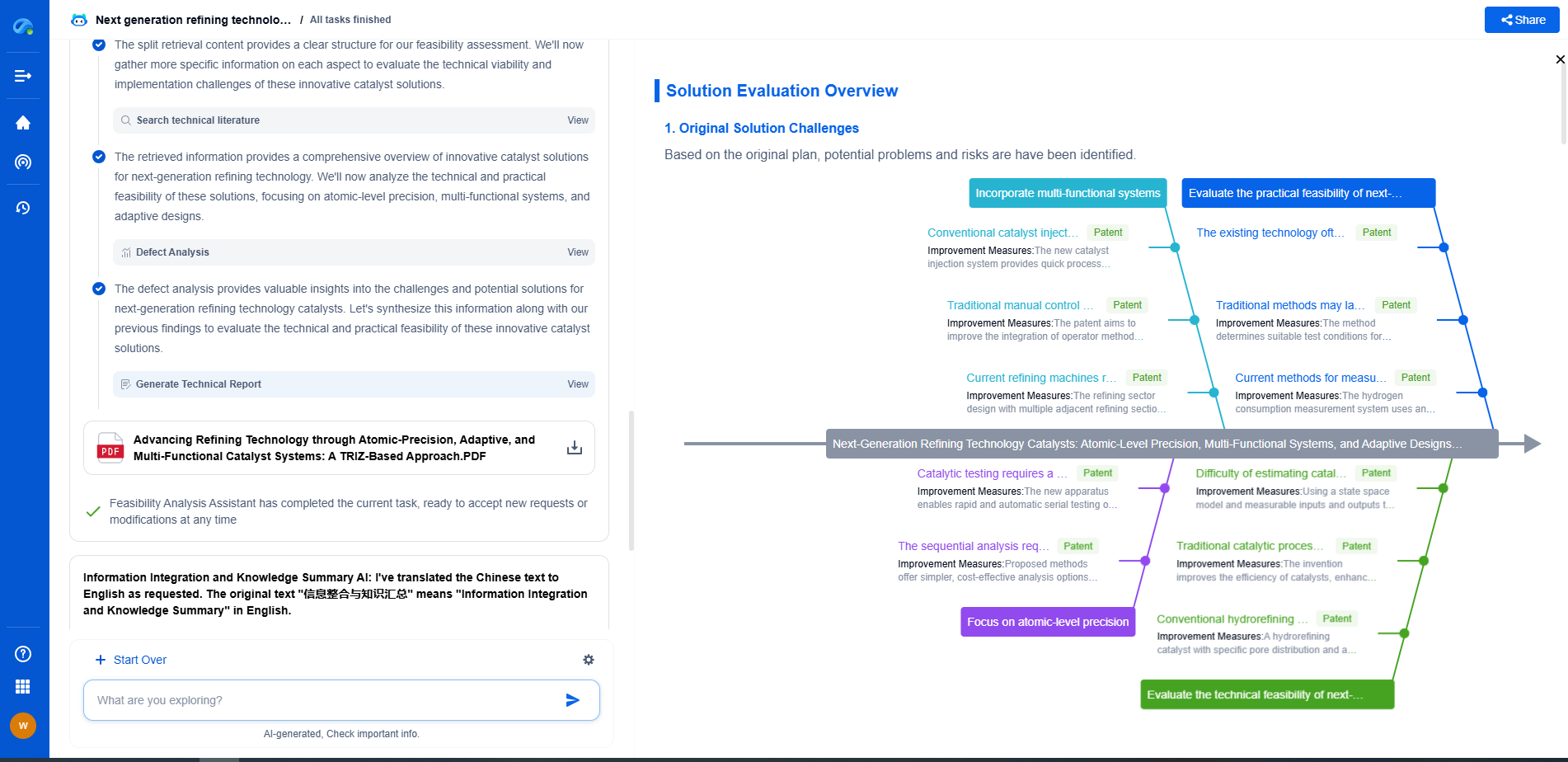What Is DNV Certification in the Wind Power Industry?
JUN 26, 2025 |
In the ever-evolving world of renewable energy, the wind power industry stands out as a critical component in the quest for sustainable energy solutions. As the demand for wind power grows, so does the need for standardized practices and certifications that ensure the reliability, efficiency, and safety of wind energy systems. One such certification is provided by DNV, a global organization with deep expertise in risk management and quality assurance. But what exactly is DNV certification, and why is it so vital in the wind power sector? Let's delve into the details.
What is DNV?
DNV, short for Det Norske Veritas, is an independent foundation that operates to safeguard life, property, and the environment. With a history spanning over 150 years, DNV has established itself as a trusted entity in multiple industries, including maritime, oil and gas, healthcare, and energy. In the context of the wind power industry, DNV provides a range of services that include certification, verification, and advisory solutions aimed at ensuring the highest standards of performance and safety.
The Importance of Certification in Wind Power
Certification in the wind power industry is crucial for several reasons. First, it serves as a mark of quality and safety, instilling confidence in stakeholders, from investors to consumers. Second, it ensures compliance with international standards, which is critical for the global market. Lastly, certification helps identify and mitigate risks, thus preventing potential failures and accidents that could lead to significant financial and environmental consequences.
DNV's Role in Wind Power Certification
DNV plays a pivotal role in the certification of wind power projects, covering everything from onshore and offshore wind farms to individual components like turbines and blades. Their certification process is comprehensive and involves several key stages:
1. Design Certification: This stage involves the evaluation of the design documentation for wind turbines and related components. DNV assesses whether the design meets the required standards and is capable of performing reliably under expected conditions.
2. Type Certification: In this stage, DNV evaluates a prototype of the wind turbine to verify that it adheres to international standards. This process includes testing under various conditions to ensure durability, performance, and safety.
3. Project Certification: For specific wind farm projects, DNV provides certification by assessing the site-specific conditions, the design, and the installation processes. This certification ensures that the entire project will function safely and efficiently in the specific environmental conditions of its location.
4. Component Certification: Individual components such as blades, gearboxes, and towers can also receive certification. This ensures that each part of the wind turbine meets the necessary standards and can operate effectively as part of the whole system.
Benefits of DNV Certification in Wind Power
Achieving DNV certification offers numerous benefits to stakeholders in the wind power industry. For manufacturers, it provides a competitive edge by demonstrating product quality and reliability. For project developers and operators, certification mitigates risks and assures investors and regulators of the project's viability. Additionally, DNV certification supports the industry's innovation by encouraging the development of new technologies that meet stringent safety and performance criteria.
Conclusion
In conclusion, DNV certification is an essential component of the wind power industry's framework, providing assurance of quality, safety, and compliance with international standards. As the industry continues to grow, the role of DNV in certifying wind power projects and components will remain crucial. By ensuring that these energy solutions are reliable and safe, DNV supports the global transition towards sustainable energy, helping to build a cleaner, more sustainable future for all.
Empower Your Wind Power Innovation with AI
In the fast-evolving landscape of wind turbine technology—where aerodynamic optimization, generator efficiency, and structural innovation are critical—staying ahead requires more than just expertise. It requires intelligent tools that accelerate R&D and protect your competitive edge.
Patsnap Eureka is your AI-powered research assistant, designed specifically for innovators like you working at the forefront of Wind Motors. Whether you're analyzing blade design trends, exploring novel gearbox architectures, or navigating complex global patent landscapes, Eureka streamlines the entire process with precision and speed.
👉 Experience how Patsnap Eureka can revolutionize your R&D and IP strategy. Request a demo today and power up your next breakthrough.
- R&D
- Intellectual Property
- Life Sciences
- Materials
- Tech Scout
- Unparalleled Data Quality
- Higher Quality Content
- 60% Fewer Hallucinations
Browse by: Latest US Patents, China's latest patents, Technical Efficacy Thesaurus, Application Domain, Technology Topic, Popular Technical Reports.
© 2025 PatSnap. All rights reserved.Legal|Privacy policy|Modern Slavery Act Transparency Statement|Sitemap|About US| Contact US: help@patsnap.com

